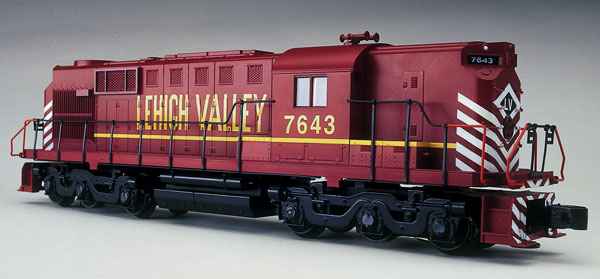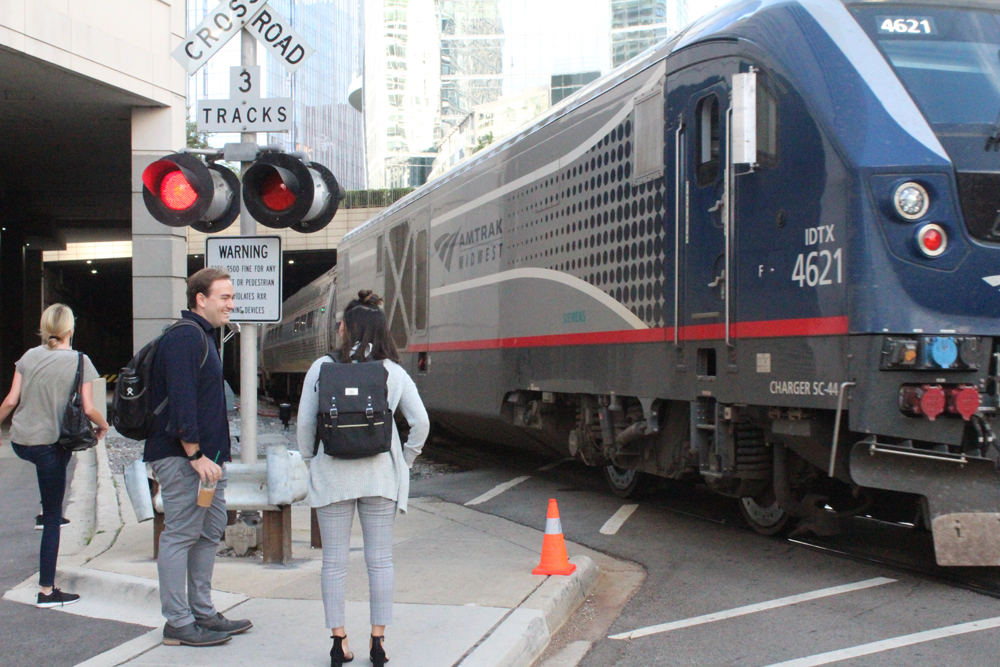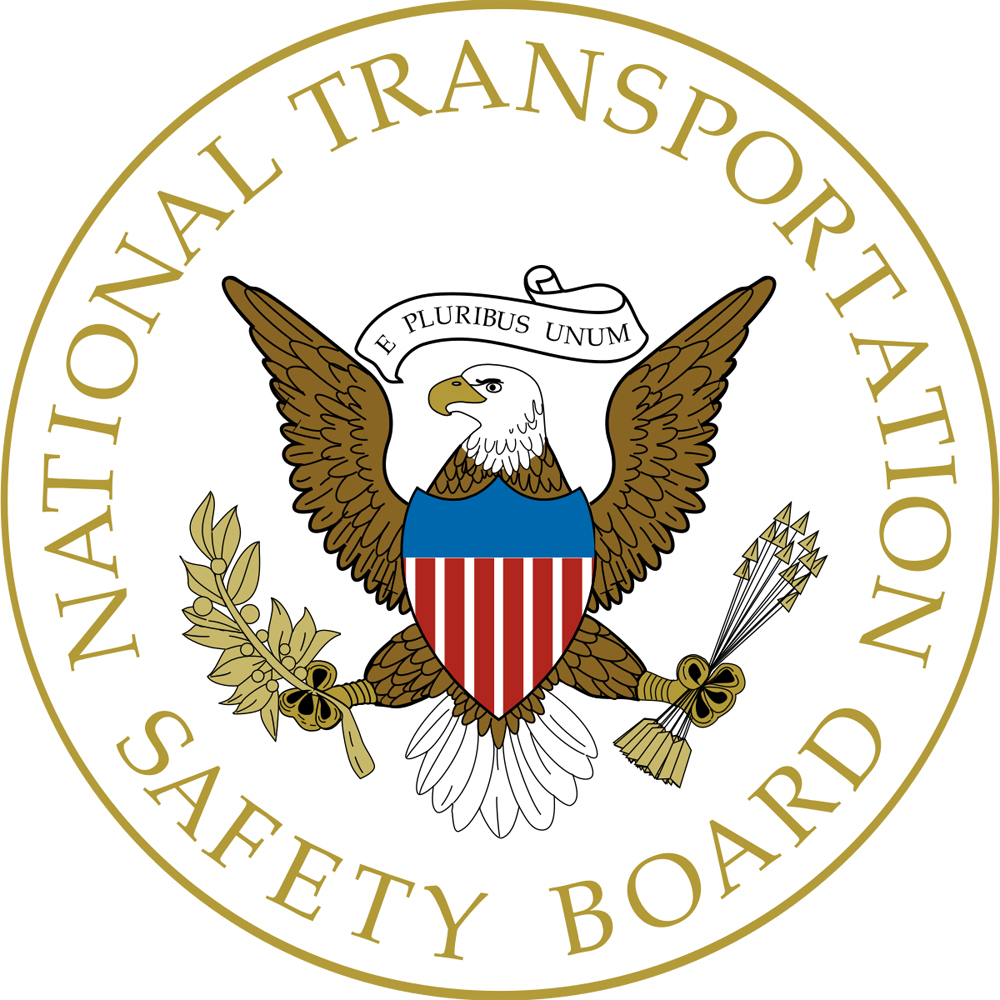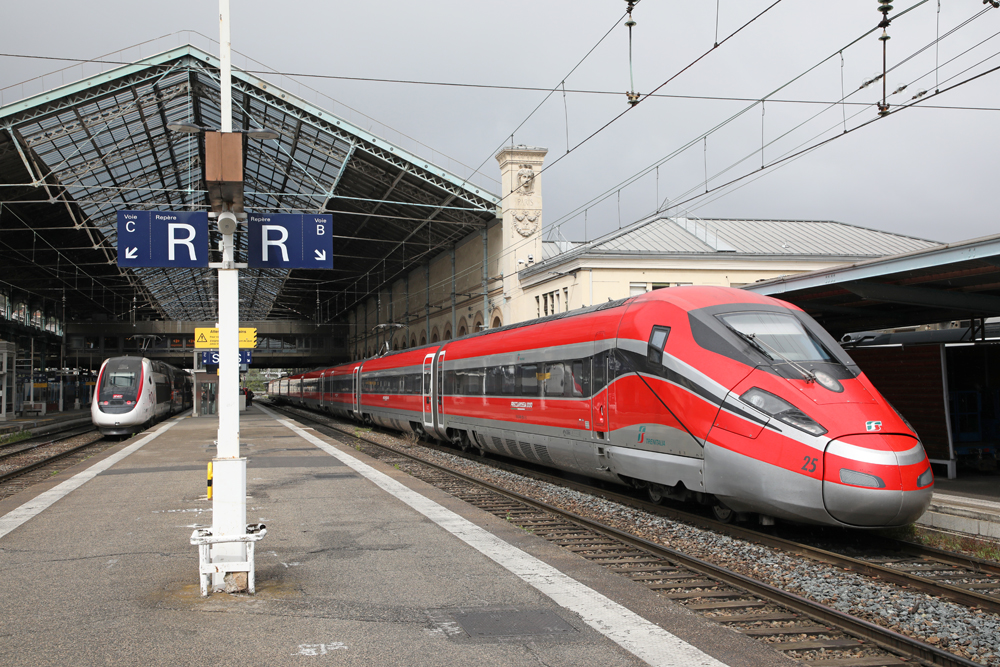Introduced in 1956, the Alco DL701 (RS-11) and DL702 (RSD-12) were designed to replace the RS-3 in the firm’s product line. The venerable RS-3 road switcher sold more than 1,300 in all its variations, and the Schenectady, N.Y.-based company was hoping for another hit with the RS-11/RSD-12.
The RS-11 and RSD-12 were two versions of basically the same carbody. Both were rated at 1,800 horsepower. The main difference was that the RS-11 weighed 120 tons distributed over four axles, while the RSD-12 weighed 180 tons and had six axles. Although both locomotives were reliable pieces of equipment, they failed to score among big North America’s railroads.
Designed to be a rival of EMD’s GP7 and GP9, the new model from Alco found the Geep onslaught too tough to resist. With more than 4,000 Geeps sold starting in 1954, there just wasn’t that much of the midrange horsepower market left to battle over. Alco ultimately sold 356 RS-11s (Norfolk & Western’s 99-unit fleet was the largest) and 161 RSD-12s (two Mexican lines bought 92 of the engines).
Model power!
The hottest battleground in today’s toy train market involve engines in the $200-$400 range. Prices keep dropping, and quality keeps going up! With the arrival of Weaver’s RS-11/RSD-12, the marketplace will be hopping.
The model captures the general lines of the Alco original. A cross-check with a variety of photos showing different road names suggests that the number of hatches, doors, and grab irons, is right on target.
In a world of low-nose diesel models, this is an attractive engine that stands out, even amid all the Geeps.
We examined a production sample Lehigh Valley unit and found the tooling flawless and the decoration superb. The colorful LV paint scheme, accented by the intricate safety stripes on each end, looks great.
Weaver’s Kelly Rice told CTT there are some slight differences in decoration of the sample we used for photographs and the final production model. The unit’s handrails will be Lehigh Valley red, and all units will have illuminated number boards.
You can pick up some diesel locomotives and immediately decide “too plasticy.” Not so with the Weaver Alco. This engine feels very comfortable in the hand, aided, in part, by a stamped steel frame and die-cast metal trucks, couplers, and fuel tank. The locomotive has a nice heft to it, weighing 4 pounds, 10 ounces, and it feels very solidly constructed.
The prototype RS-11 is 56 feet, 113/4 inches coupler to coupler, and the RSD-12 is 58 feet 13/4 inches long. The Weaver model is 141/2 inches (58 scale feet) long.
The Alco has a great sounding horn and bell, though the diesel sound system seems somewhat generic. If sound systems are not your cup of tea, the engine is available without sound.
The new-design headlight is terrific and actually casts a directed beam of light down the track that an O scale engineer could use. This is a nifty – and useful – innovation.
It was a pleasure to run the RSD-12. It handled a 22-car freight train effortlessly and seemed to have plenty of power in reserve. We measured the engine’s drawbar pull at 1 pound, 8 ounces or equal to roughly 70 modern pieces of rolling stock.
The locomotive demonstrates a good speed range, measuring 28.8 scale mph on the low end and 128.4 scale mph on the high end. The flywheel is fairly good in bringing a moving train to a stop with minimal havoc among the freight cars.
Both the four-axle RS-11 and six-axle RSD-12 are available undecorated and in Chesapeake & Ohio, Chicago & North Western, Delaware & Hudson, Lehigh Valley, New Haven, New York Central, New York Central lightning stripe, Nickel Plate Road, Norfolk & Western, Pennsylvania, Southern Pacific, and Union Pacific road names.
Engines are also available in multiple road numbers.
Though the RS-11/RSD-12 were far from a success in the prototype world, Weaver’s model has a lot to offer. It is nicely detailed, well built, and has a size and shape that will look at home on many layouts modeling the steam-to-diesel transition period. Couple this with solid performance and you have an engine worthy of the attention of your railroad’s finance committee.














